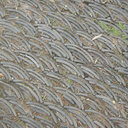Safety, tolerability, and pharmacokinetics of a single ascending dose of baicalein chewable tablets in healthy subjects.
Keywords
Abstract
BACKGROUND
The root of Scutellaria baicalensis Georgi has been used extensively in traditional Chinese medicine for the treatment of inflammation, fever, cough, dysentery, and hypertension. Baicalein is a flavonoid isolated from the root of Scutellaria baicalensis Georgi and is a novel neuroprotective agent under development for the treatment of Parkinson׳s disease. We aimed to investigate the pharmacokinetic (PK) properties of baicalein and its main metabolite, bacalin, after single-dose administration in healthy Chinese subjects. The safety and tolerability of baicalein were also assessed.
METHODS
This was a Phase I, randomized, double-blind, single-dose trial of baicalein (100-2800 mg) in 72 healthy adults. Samples of blood, urine and feces were collected at regular intervals up to 48 h after administration of the study drug. Baicalein and baicalin were then analyzed using liquid chromatography-tandem mass spectrometry (LC/MS/MS). The maximum concentration that the drug achieved after dosing (Cmax), time to Cmax (Tmax), terminal half-life (t₁/₂), area under the curve from time zero to time of last quantifiable concentration (AUC(0, t)), area under the curve from time zero to infinity (AUC(0, ∞)), apparent total plasma clearance (CL/F), and apparent total volume of distribution (V/F) were determined using non-compartmental models. Dose proportion was tested using a method combining the equivalence criterion and power model. Physical examinations, vital signs, ECG findings, hematology, and urinalysis were monitored before and at regular intervals after administration of the study drug.
RESULTS
The PK profile of baicelein and baicelin was characterized by a median Tmax of 0.75-3.5 h and 0.5-3 h, respectively, followed by a multiphasic profile with a t₁/₂ of 1.90-15.01 h and 4.22-10.80 h, respectively. The estimates of the proportionality coefficient (90% CI) for Cmax, AUC₀-t and AUC₀-∞ were 0.83 (0.70-0.96), 0.91 (0.81-1.00) and 0.92 (0.82-1.02), respectively. All values overlapped within the pre-specified range of (0.89-1.11), (0.93-1.07), and (0.93-1.07), respectively. Dose proportionality was inconclusive for a baicalein dose range of 100-2800 mg. The total urinary clearance of baicalein and baicalin was <1%. Approximately 27% of baicalein was eliminated as unchanged drug in feces. Baicalein was well tolerated. Eleven treatment-related adverse events were observed, and all were rated as "mild" and resolved without further treatment. No serious adverse events occurred.
CONCLUSIONS
Single oral doses of 100-2800 mg of baicalein were safe and well tolerated by healthy subjects. Clinical laboratory assessments showed no signs of toxicity in the liver or kidney. The favorable safety profile and PK properties warrant further clinical studies for baicalein.




